Articles
About pencil sketches en plein air.
Let us consider the specific features of drawing pencil sketches in the open air. Pencil sketch made en plein air may be useful and effective due to several reasons.
First of all, this exercise does not require a lot of equipment. You only need a clipboard, office paper and soft (5B-9B) pencil. However, if you are purposefully going to draw in the open air, we would recommend you to bring a little chair (not an armchair!).
Sometimes painter hesitates to go sketching due to the necessity of bringing the French Box easel with oil. In this case pencil drawing en plein air may become a way out of the situation.
When a number of oil studies are done you may switch over to pencil sketches in order to diversify your art practice. In such situation you may reveal actual art potentials of pencil. In routine study drawings we sometimes forget about the emotionality of pencil lines.
Old architecture is a good object for sketching due to its expressive texture and picturesqueness. At the same time we should not be indifferent from the very beginning. Varying the pressure applied on the penciil you can make your lines more passionate.
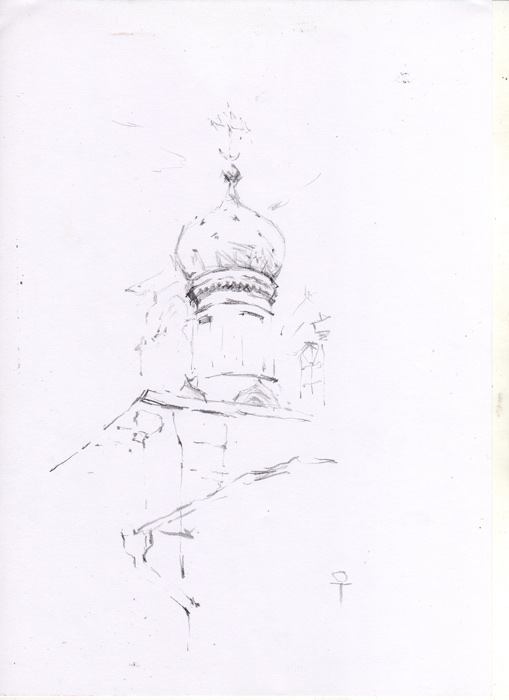
Further linear drawing may turn to a tonal one. In that case the principles of work are closed to those we use doing oil studies. Tonal sketch may be recommended as an often practise for everyone who starts to paint.

Also pencil sketch might remain more linear. In that situation we can take care of the liveliness and emotionality of the lines. Expressive, not formal strokes may help to capture the texsture of the depicted objects (the texture of masonry, for instanse).
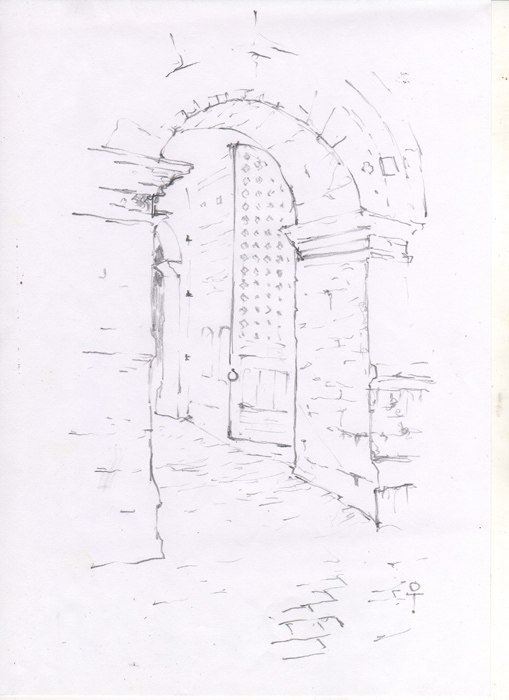
It shoul be noticed, that the method of putting strokes while sketching is different from the one we use during long study drawings. Sketches, as a rule, do not require neat strokes and indifference, which are characteristic for study drawing of begginers. On the contrary, every line should be “vivid” and “picturesque”, which means using various thickness of strokes. The same thing happens with the tone, which should be added using smudging techniques. It is better run the edge of the part along the side of the exposed pencil "lead" rather than try to draw a line with the tip along the thin edge. However, you may correct small details using the thin edge. That will help you to feel diverse potentials of the pencil as a drawing tool.
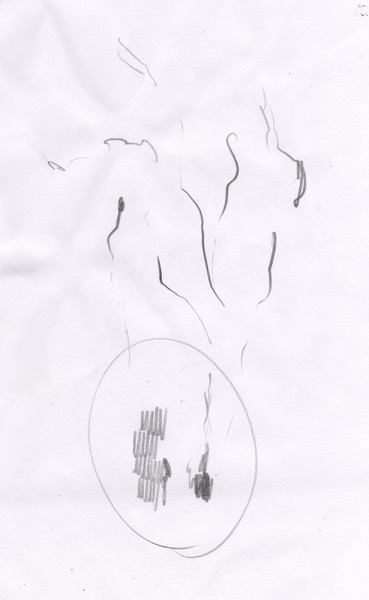
Paying attention to such things you may develop your graphic technique, obtain new skills and abilities. Gaining the capacity of doing more intresting picture from the very first lines an artist, besides the sudden surge of joy, also acquire a number of opportunities for using new skills.
First of all, more positive attitude towards sketching in general (as long as drafts look more intresting, emotional etc.) offers an insentive for drawing more often.
Also the understanding of the principles of making “picturesque” line leads an artist to the wish to use it in depicting all objects, including imaginary ones. As a result making graphic works from imagination becomes easier.
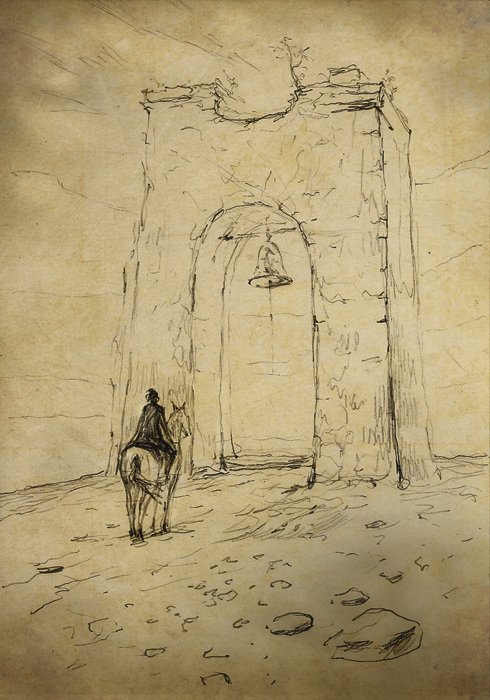
Finally, the recognition that lines and hatches may be more vivid influence the technique of long drawings, which become more rich and expressive. The lines and hatches become more emotional, and not indifferent any more.
Most of beginners start with sketches which look like little long drawings. It happens because long drawings are practiced a lot, and sketches are not. Later sketches assume its specific characteristic features. Finally sketches impact long drawing.
Drawing objects with explicit plasticity is good not only for improving the flexibility of the lines but also for developing the ability to reveal a plasticity in every model we draw, including human figure.
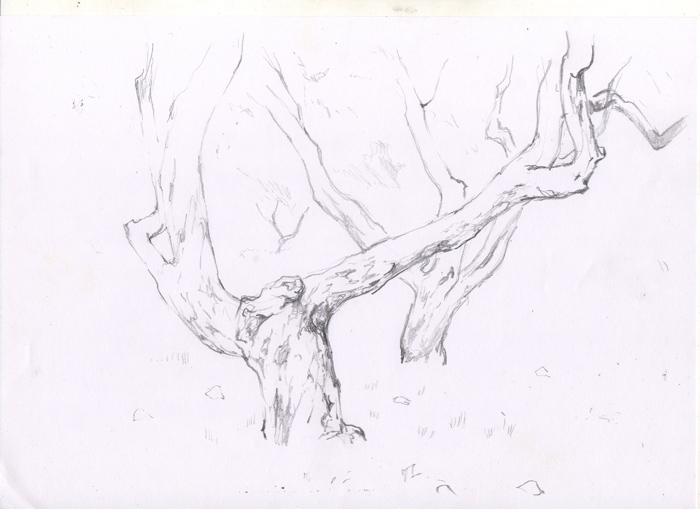
You may concentrate on the lines (in order to show the texture of the object) as well as on the tone.

Oleg Toropygin